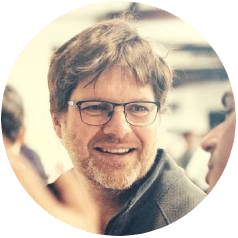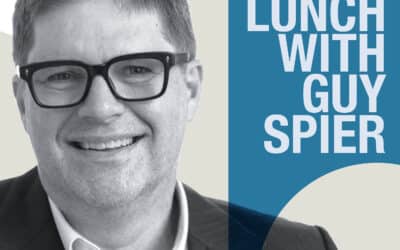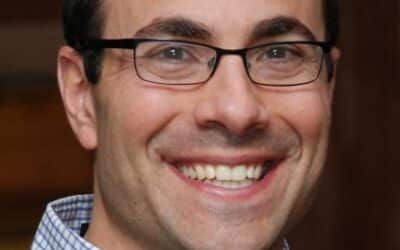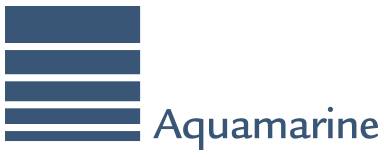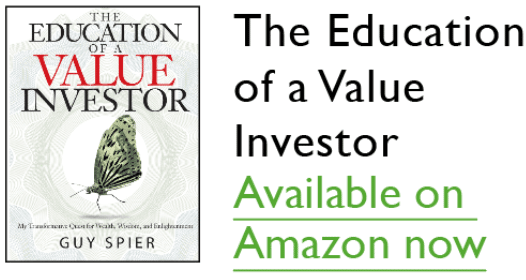The Spill
It was a cool morning on my second day of cycling in Flanders. I was on a dedicated cycling path, near to Kortrijk at the epicenter of the Spring Classic cycling races.
I had joined some club cyclists to ride some legendary routes along with the Cannondale professional team. Towards mid morning I was starting to get tired and I fell a little behind the group. But a buddy, someone I had met the previous day had slowed down for me, and I was now drafting him so that we could catch up to everyone else.
So I was cycling hard about two inches behind his back wheel, taking advantage of his wind shadow. That meant that I could go 15-20% faster for the same effort.
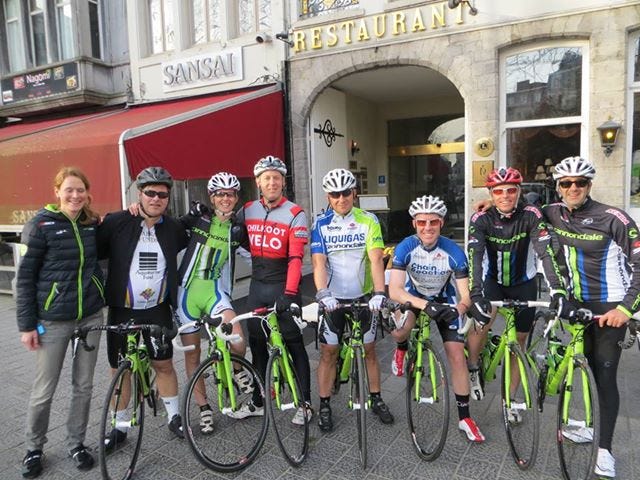
Group photo the morning of the spill
Then, as I looked up, I saw the flash of a cyclist coming in the other direction. Startled, my cycling buddy braked and then swerved. I remember seeing his back wheel cross my front wheel, and then force it to the left. Instantaneously, my bike followed the front wheel and I flew right. A sudden rush, a momentary blackout and I came to, lying face up in a ditch, looking up at a bluish grey, early spring sky.
Instinctively, I knew not to move. I first thought about my head. It was comfortable, and my helmet was still on my head. That’s good, I thought. Next my neck. I moved my head a little, and it also felt fine. Arms, legs and fingers — they were also fine. But I felt no desire to get up.
Then my riding buddy got to me. “Are you alright, he asked”. I looked at him dreamily. “I think so”, I said. He asked if I wanted help getting up: so I gave him my left arm. Gingerly, I stood up. Feeling a little dizzy, I looked down to see the bloody road rash down the right side of my leg and arms. Then eyes came to rest on a rather large bump on my right shoulder. That did not feel good at all and I felt a rush of nausea. I’m vasovagal — which means that when I am reminded of the workings of my body, I get quite dizzy. I have often fainted at the sight of my own blood.
“I need to sit down again.” I said, realizing that shock was setting in and that I would not be able to get back on the bike. My buddy offered to get help and I nodded approvingly. I added, “Actually, I think that I need to lie down.” He gave me his bottle of water, and I stepped gingerly back to the soft grass in the ditch, to lay down.
Forty minutes later I arrived at the hospital outside Kortrijk. The diagnosis could have been surmised from the way I cradled my right arm — to take weight off the shoulder. But the X-ray confirmed it: I had completely ripped the three different tendons that hold a bone called the acrimioclavicle to the shoulder. On a severity range graded from 1 to 6, this was a 3. Possibly a candidate for surgery. They sent me back to the hotel with a prescription for two painkillers — dafalgan and diclofenac.
I arranged to fly straight back to the Zurich and had myself taken straight to the University Orthpedic Hosptal in Balgrist. For a while they thought that it might be a grade 4 injury. For my part, all I wanted was to be taken out of my misery.
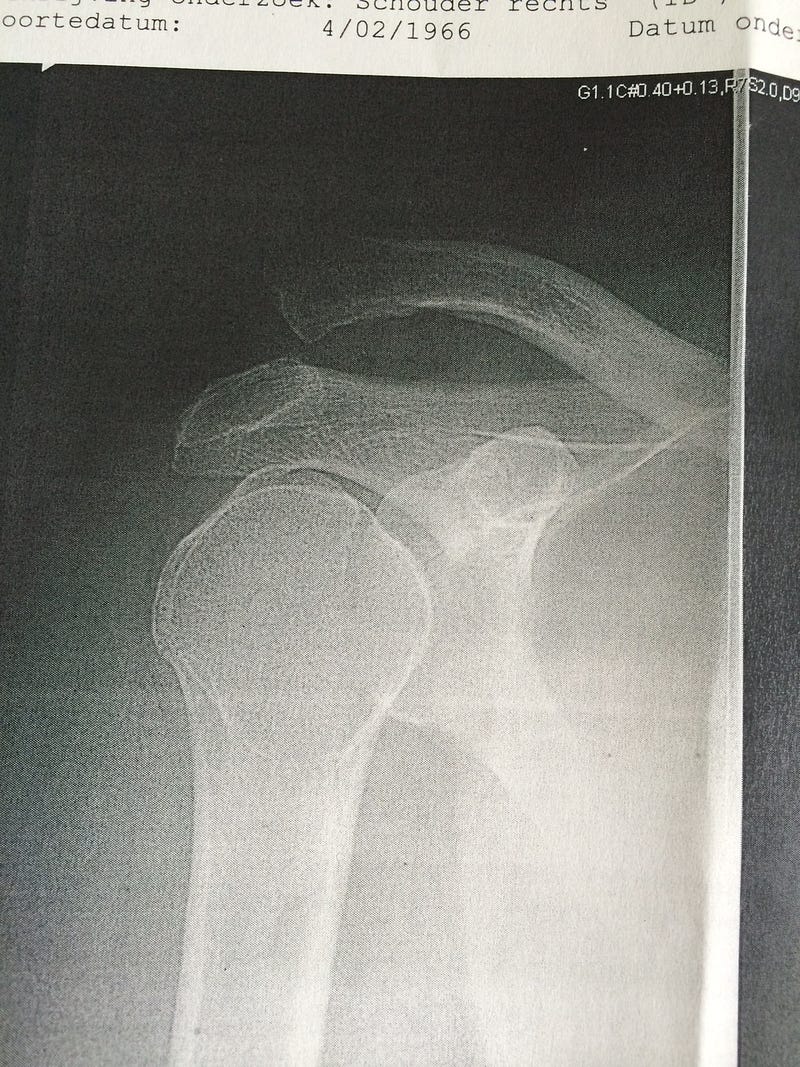
X-Ray of my right shoulder
I wanted to go under general anesthetic, and for them to “go in there and fix it!”. I think that the exact words to Dr. Gerber, a world famous shoulder expert, were, “Please, just make it like it was before”.
Instead with kind eyes he explained that surgery would require at least 3 months of recovery, that there was no guarantee of a better outcome. Had I been his son, he could not have done surgery.
With that, I was sent home with an extra prescription for tramadol: an opiate based pain killer that works like morphine. Upon returning home, I took my first dose and gingerly lay down. Within a short while, I felt myself getting as high as a kite and passed out.
The next morning, with all the pain killers worn off, I inadvertently tried to move my shoulder and felt unprecedented pain. This was not something short and sharp, or a dull ache. This was at once agonizing, severe and intense. Searingly sharp and gruntingly dull at the same time. The most agonizing, all-encompassing pain that I have ever experienced in my life.
Unfortunately for me, the painkillers were downstairs and I was immobile. My wife, Lory was away. So there was no point crying out for help until after our nanny, Flor had gotten back from dropping the children off at school. I finally got her attention so that I could thankfully imbibe another solid shot of tramadol — this time laced into a glass of raspberry syrup so that I could gratefully return to a drug induced, pain free haze.
As I think back on those first five days, they are a blur. My very worst moment was when, trying to get out of bed, I fell on the wooden floor of our bedroom. As I lay there, writhing in pain, I unleashed a torrent of anguish and anger.
There is nothing good about severe pain: it was miserable and I was miserable.
The easiest moments were when, with the help of tramadol, I could escape the reality of my predicament, and return to the obliviousness of a blissful and dreamy drug induced high.
It’s now three weeks since my accident and I am off the pain killers. Each day, my shoulder recovers a little more and I have a little more movement. Today I was even able to gingerly put on a jacket on my own. Dr. Gerber is confident of a complete recovery. He explained that, with plenty of aqua and physical therapy, the odds are better than 9 out of 10 that I will not need extra surgery. While I like those odds, I still hate the uncertainty and wish that they were better. And every now and then, I feel an powerful twinge that brings tears to my eyes and then I get nauseous all over again as I remember my injury and what is going on in my shoulder.
Lessons
Now that the worst is over, I am now able to consider, at my leisure, what I might have done to avoid the accident and what the lessons ought to be. I had suggested to Dr. Gerber that in Carl Jung’s view, “there are no accidents”. Dr. Gerber was quickly and gently dismissive. He said, “in my view, there are such things as accidents. Sometimes, God is simply not paying attention”. Probably a phrase that he has repeated many, many times to all sorts of accident victims.
But I beg to differ.
I have played and replayed the circumstances of the accident man times over in my head. Over and over again, wishing that so many things had been different. And while there are, no doubt accidents, from the perspective of now I am quite appalled at the number of risks that I had implicitly taken. My cousin Michael, who is a ski guide, calls it a knowledge bump. If it is, then it was gained at an enormous, and painful expense. One that I would have far preferred to have been able to avoid.
My purpose in writing this is to drum in the lessons. To remember and to make explicit so that I never take the same risks again.
Perhaps you, the reader will also benefit. Better to learn from my mistakes than your own.
It starts with the question of why I was cycling so fast, two inches behind another cyclists wheel. Truth be told, drafting and group riding can be very exhilarating. But I was not trying to win a race and in general, I am not a big thrill seeker. Why was I doing it? And why so close to his wheel?
The simple answer is that I did not want to slow the group down. This was a group of strong riders and they wanted to ride fast. As a group. One month prior, when I had accepted the invitation to join, from a friend, I had told him that I was concerned that I would slow the group down, and that I wanted to be sure that they were okay with it.
But in my post accident pain, I realize that this was not nearly enough. Most probably, I should not have accepted the invitation. But even having accepted the invitation, I should have been far clearer with the group, and with myself and insist clearly that because I did not want to be an impediment, I would not be riding with the group.
It’s never fun to be at the bottom of an engineering class, and it’s usually not fun to be the slowest person by far in a cycling group. But if I had ridden at my own pace, I am certain that the accident could have been avoided.
This also goes to a deeper issue of learning to be much better at saying no. It is so much more fun to say yes, and saying no is, for the most part, no fun at all. But as this accident shows, failing to say no can come with a huge price.
Then there are some basic safety lessons:
Even having taken the decision to draft, there are safer and less safe ways to do it. Ideal is only to draft in controlled conditions — where the road has been closed to traffic and all the cyclists are moving in the same direction. In my case, we were on a cycle path, not a road. But even so, there were cyclists coming in the other direction. It was in retelling the story of the accident to a friend that I remembered how, just as our wheels crossed, I had seen another cyclist pass us in the other direction. At that moment, I realized that my cycling buddy in front of me must have, probably subconsciously, braked and swerved having been unnerved by the cyclist coming in the opposite direction. Now he was an experienced cyclist. But he had only arrived in Belgium the day before from the USA, and he had probably not prepared for and was not used to riding on relatively narrow European cycle paths.
In offering to bring me back to the group, this rider was implicitly asking me to trust him in the drafting. He was implicitly making the commitment that he would not suddenly brake or swerve. And I have no doubt that he believed that he would not do any of those things. But he did. It was a big mistake of mine to put my trust in a cyclist whose expertise I barely knew.
Also, he and the group were in their mid-thirties. While I am in my late forties. And there is always going to be a dynamic where younger guys try to get me to do stuff that is beyond my ability, and who sincerely believe that I am capable. They will misjudge my age and my abilities, and I will have a testosterone induced desire to want to join in. What I need to understand is that I will never be able to explain or convince the others. I just have to decide whether it is safe for me or not, to pull out when it is not, and most certainly not to think about or to be concerned about how they view my decision.
Even if I zoom out of the picture a little bit more, there are yet more lessons for me. For in the days leading up to the trip, I was not entirely sure that I wanted to be there with the group in Kortrijk. Originally, I had booked the trip as a reward for hard work. After two years, of slaving away, I had finished writing a book. After having spent all that time cooped up indoors with the manuscript, I was excited to get outside and get super fit and healthy. But then my wife, Lory realized that this was the only window she had to visit Mexico for her charity. The children were to be left with a nanny for a few days. Lory was absolutely fine with it, as were the children and the nanny. But deep down, I was not. I felt that it was wrong to leave the children alone, and I was deeply doubtful about going. I kept casting around for reassurance — from my parents and co-workers. Indeed, I was so ambivalent that I only started packing half an hour before I was due to leave for the airport. Then, in getting my car ready, I managed to find myself with a run down battery, unable to drive to the airport. Had it not been for the fact that I was able to get onto a later flight to Belgium, I might not have made it to the event at all.
In retrospect, it is clear that I was simply not reading the very powerful instincts that my own body was giving me about where it wanted me to be. And so it was in a slightly distressed and un-together state that I arrived in Belgium. My mind was not really with the riding group and was not entirely focussed on the cycling.
But it is not just that I did not arrive in the right mental state. I did not do anything to even try to put myself into the right mental state.
By contrast, for 7 years, I rode a motorcycle in New York City without a single accident. And it was not only because I was lucky. In choosing to ride a motorcycle in NYC, I was conscious that I was choosing to do something dangerous. I studied the accident statistics and was very careful about minimizing the risk — not riding at night, in the rain, or with any alcohol inside me. I also knew the types of road situation that most lead to accidents and was careful in avoiding them. But I had never gone through a similar analysis for a cycling.
For I believe that this sort of mental preparedness would have also saved me. And the same goes for the group. No-one in the group thought to give a safety briefing: a short talk that reminds the everyone that we are engaging in a potentially dangerous activity and brings safety awareness to everyone’s minds.
Would any of these things have saved me? Perhaps not. But there were so many missed opportunities to reduce the risk of an accident. So much low hanging fruit.
So, here is some of what I learned.
- Cycling is a dangerous sport. Get into the right mental state before every ride.
- In addition to a personal safety check, make sure that someone in the group I am riding with delivers safety talk — just to raise safety consciousness with the group.
- Listen to my instincts. If I’m not comfortable with something, it’s okay to cancel. It’s okay to say no. Even if the rest of the world thinks that I am a stick in the mud, a feeble oldie, or a quitter. And it’s always okay to change my mind. Something that was okay yesterday might not be okay today.
- Beware friendly team mates. Beware younger buddies who may well overestimate their and my abilities. Just because someone thinks he is a good rider and just because someone thinks that I am up to the challenge does not mean that it is true.
- Beware drafting a rider whom I don’t know. Beware drafting a rider who does not know the route, or who is new to the environment or who recently arrived in the area. If I’m going to draft, better to do it in a controlled environment.
- Beware riding, or doing any other activity with a group that is faster, stronger, younger or more gung-ho. For it will accelerate how quickly I can get into trouble.
And here is one last thought: my father is an enthusiastic private pilot. He flies a twin engined Piper Aztec six seater. He is also an avid reader of flying mags, and especially a column called “I learned about Flying from That”. The column tells real life stories of near misses and of fatal and not so fatal flying accidents and mishaps. Each story contains a kernel of wisdom that makes the reader just that little bit wiser about flying. With my newfound experience of the lurking dangers of cycling, I went about looking for similar columns in cycling magazines and books. There was not much to be found. That is not good and is something that should change within the culture of cycling.
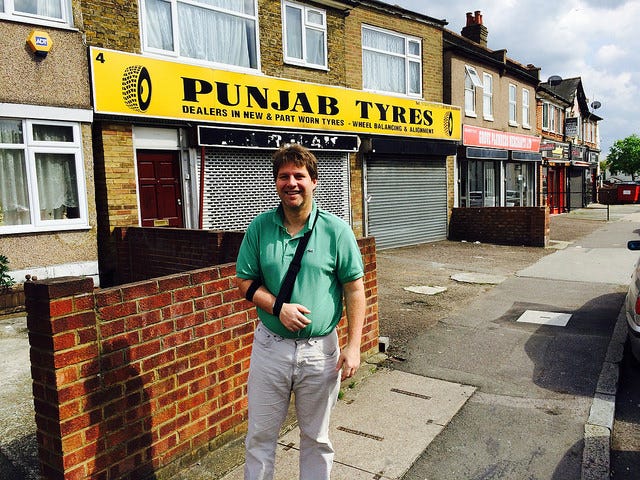
Four weeks after the accident in Hounslow — taken by my father.
Cycling is potentially fatal. Had my accident happened differently, I might have lost my life, or ended up a para, or quadriplegic. A split shoulder is a mild sentence in comparison and I am grateful. Even so, I had better learn the lessons well and make them count. For they were won at a high price.

